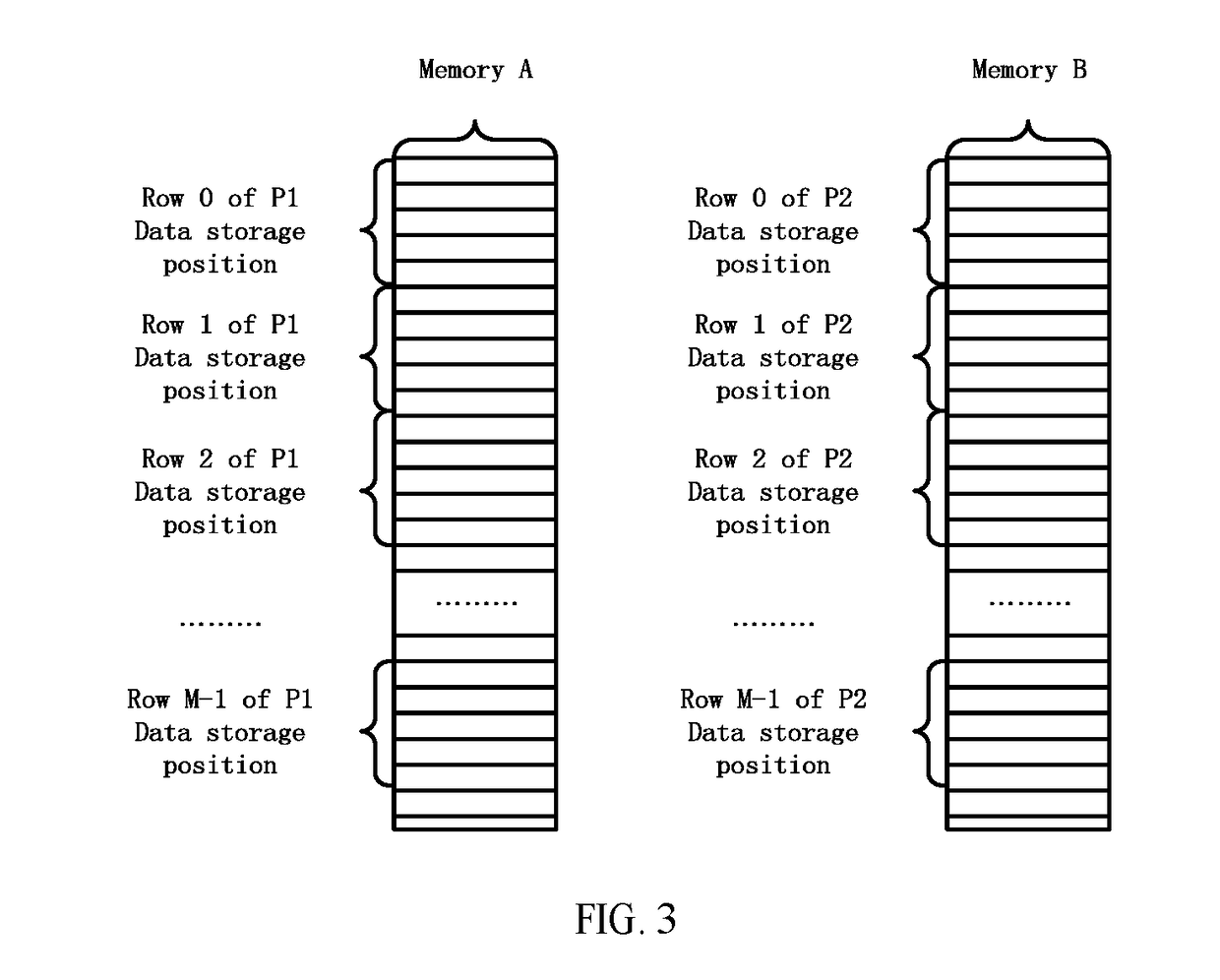Method for generating row transposed architecture based on two-dimensional fft processor
a two-dimensional fft processor and transposable architecture technology, applied in the field of digital signal processing, can solve the problems of reducing the complex data control process, and high requirement for on-chip memory, and achieve the effect of improving the poor efficiency of accessing off-chip sdram
- Summary
- Abstract
- Description
- Claims
- Application Information
AI Technical Summary
Benefits of technology
Problems solved by technology
Method used
Image
Examples
Embodiment Construction
[0039]For clear understanding of the objectives, features and advantages of the invention, detailed description of the invention will be given below in conjunction with accompanying drawings and specific embodiments. It should be noted that the embodiments are only meant to explain the invention, and not to limit the scope of the invention.
[0040]As shown in FIG. 1, a row transposed architecture based on a two-dimensional FFT processor comprises a receiving control logic for FFT row transformation results, an on-chip memory, a FIFO for buffering and writing data from a SDRAM, an external memory interface (EMIF) for controlling reading and writing of an off-chip memory, a read / write control logic for the EMIF, and a read / write control logic for the on-chip memory.
[0041]A capacity of the on-chip memory is 8192*15*64 bits. The on-chip memory employs a Ping-pang buffer structure, and comprises a memory A and another memory B. Each of the memory A and the memory B comprises seven 64*8192 ...
PUM
 Login to View More
Login to View More Abstract
Description
Claims
Application Information
 Login to View More
Login to View More - R&D
- Intellectual Property
- Life Sciences
- Materials
- Tech Scout
- Unparalleled Data Quality
- Higher Quality Content
- 60% Fewer Hallucinations
Browse by: Latest US Patents, China's latest patents, Technical Efficacy Thesaurus, Application Domain, Technology Topic, Popular Technical Reports.
© 2025 PatSnap. All rights reserved.Legal|Privacy policy|Modern Slavery Act Transparency Statement|Sitemap|About US| Contact US: help@patsnap.com



